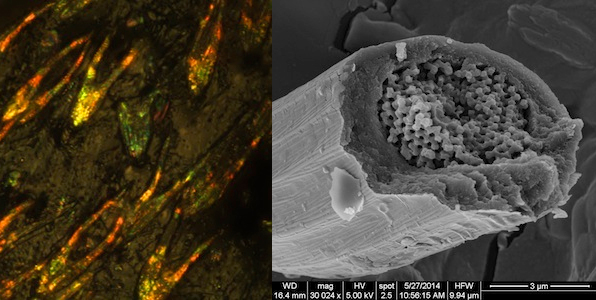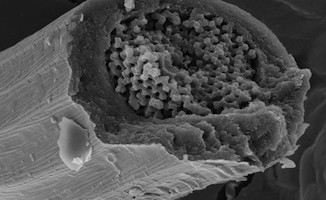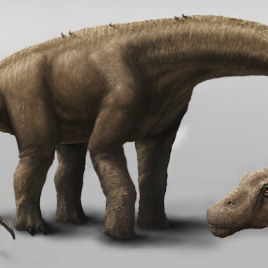
The iridescent colours in scales from a fossilized weevil shell found in the Yukon (left) are formed by tiny light-scattering crystals (scanning electron micrograph, right). The discovery offers insight into the evolution of these crystals, which could be mimicked by humans in banknote security features or electronic devices. (Photo credit: Maria McNamara)
Scientists have found unique light-scattering crystals in a 700,000-year-old fossilized bug from Gold Run, Yukon. Modern weevils also produce such crystals, but until now not much was known about their evolution.
The crystals exploit quantum phenomena to shine bright red and green when examined closely, but from afar the colours blend to produce a muddy brown that the insect uses for camouflage.
Understanding how nature manipulates light with crystals could help humans create new security measures for currency or design new electronic devices.
Original research paper published in the Journal of the Royal Society Interface on September 2, 2014.
Names and affiliations of selected authors

